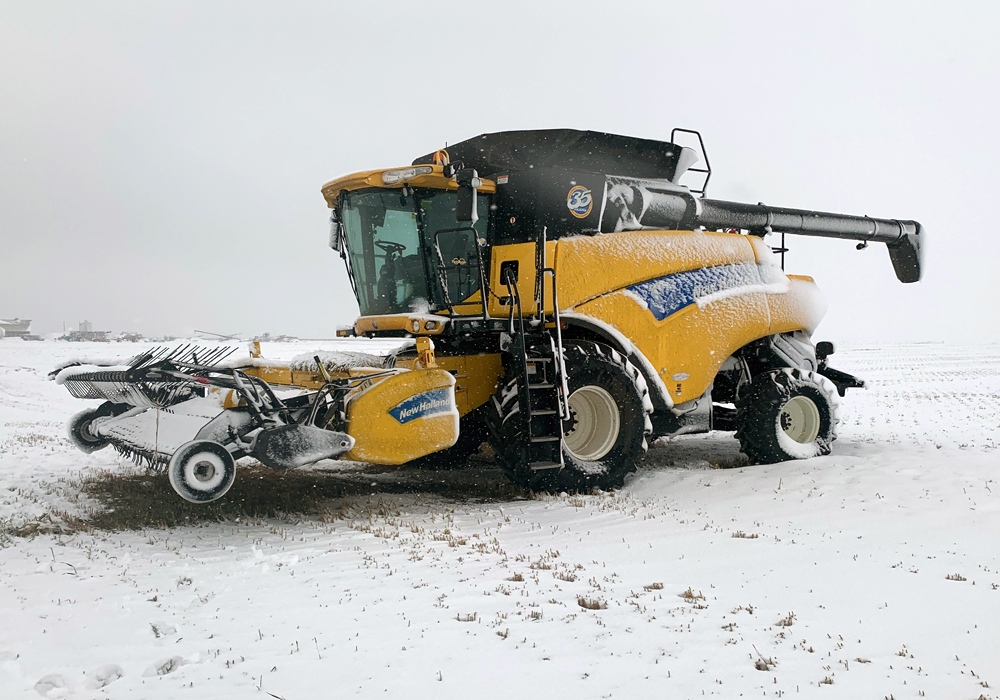Combining late in the fall sucks. You work harder and harder for diminishing returns.
This hit home the other day when I went to clean the combine windows, normally a routine task. We keep a squeegee in a 20-litre pail filled to about one-third with water. The squeegee handle protrudes through the hole in the lid and the pail rides nicely in the back of the tool truck.
This time when I removed the lid and pulled out the squeegee it was encapsulated in a solid ice block. Plan B: I used a rag to wipe the windows.
Read Also

Higher farmland taxes for investors could solve two problems
The highest education and health care land tax would be for landlords, including investment companies, with no family ties to the land.
I haven’t pushed ice and snow through the combine like producers in some regions. Nor have I combined on any really cold days. However, I’ve been picking away at some late-to-mature flax, amid snow flurries and it isn’t much fun.
By the time the sun comes up and the dew and/or frost dries off, there aren’t many hours left in the day until the sun goes down. Sometimes it remains dry enough to thresh after dark and sometimes it doesn’t.
Either way, the grain truck and the auger tractor need to be plugged in each night. So far, the combine in the field has started each day. It would be a real problem to run it back to the yard every night. Besides, it isn’t even equipped with a block heater since in normal years it’s parked for the season by the end of September.
When combining in August and September, you can often work long days, cover a lot of acres and fill bins rapidly. Aeration fans can effectively dry grain that needs moisture reduced and early harvested grain is often top quality.
By contrast, in the truncated days of late fall, progress is slow and sometimes minimal. Aeration fans might keep grain from spoiling, but they won’t dry the grain. Most producers in the southern grain belt regions don’t have grain drying capability, but when it gets this late in the season, they may be stuck harvesting tough and damp grain with no real plan for how to deal with it.
Where grain dryers are common, many farms will be drying grain for weeks and months to come. Some producers report that all or nearly all of what they harvested this year will require drying. That’s a big cost in either natural gas or propane, a cost aggravated by the carbon tax.
The drying cost is often for grain where quality issues have already reduced its value. In my case, the flax has some frost damage. Any wheat combined this late is likely to be feed quality. Canola harvested this late might be fine for quality or it could have green seed issues.
Some producers have off-farm work commitments or they serve on various boards and commissions that are ramping up activities. Some have a cattle side to their business and this is the time of year for weaning and processing calves. Most have a family that’s also growing weary of a never-ending harvest season.
Still, it’s far better to persevere and finish than to leave crop that will need to be harvested in spring. That unfinished business will weigh on your thoughts all winter. While the work might be easier in the spring, crop quality certainly won’t improve and everyone wants to move ahead with the new growing season rather than dealing with the old.
Kevin Hursh is an agricultural journalist, consultant and farmer. He can be reached by e-mail at kevin@hursh.ca.
















